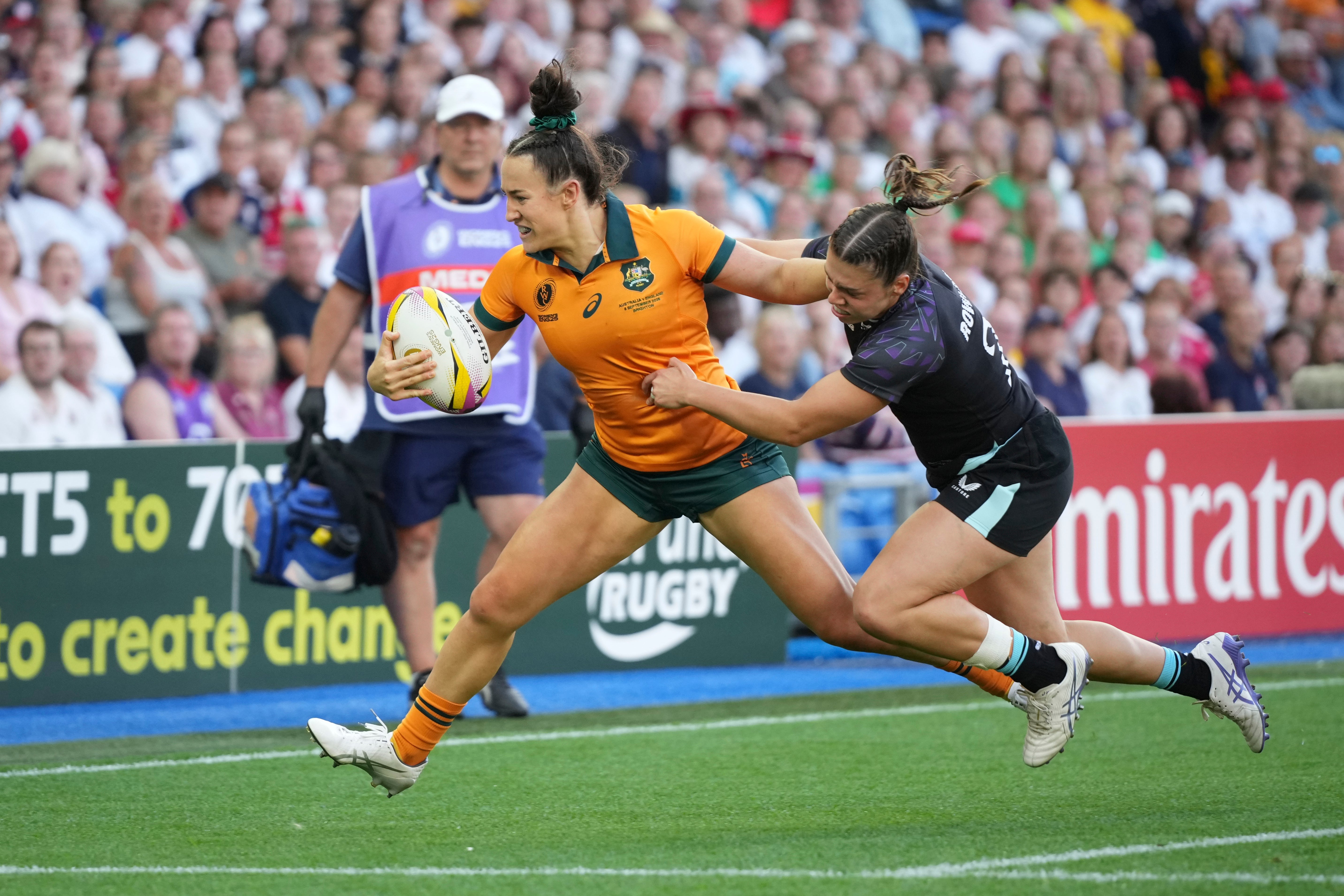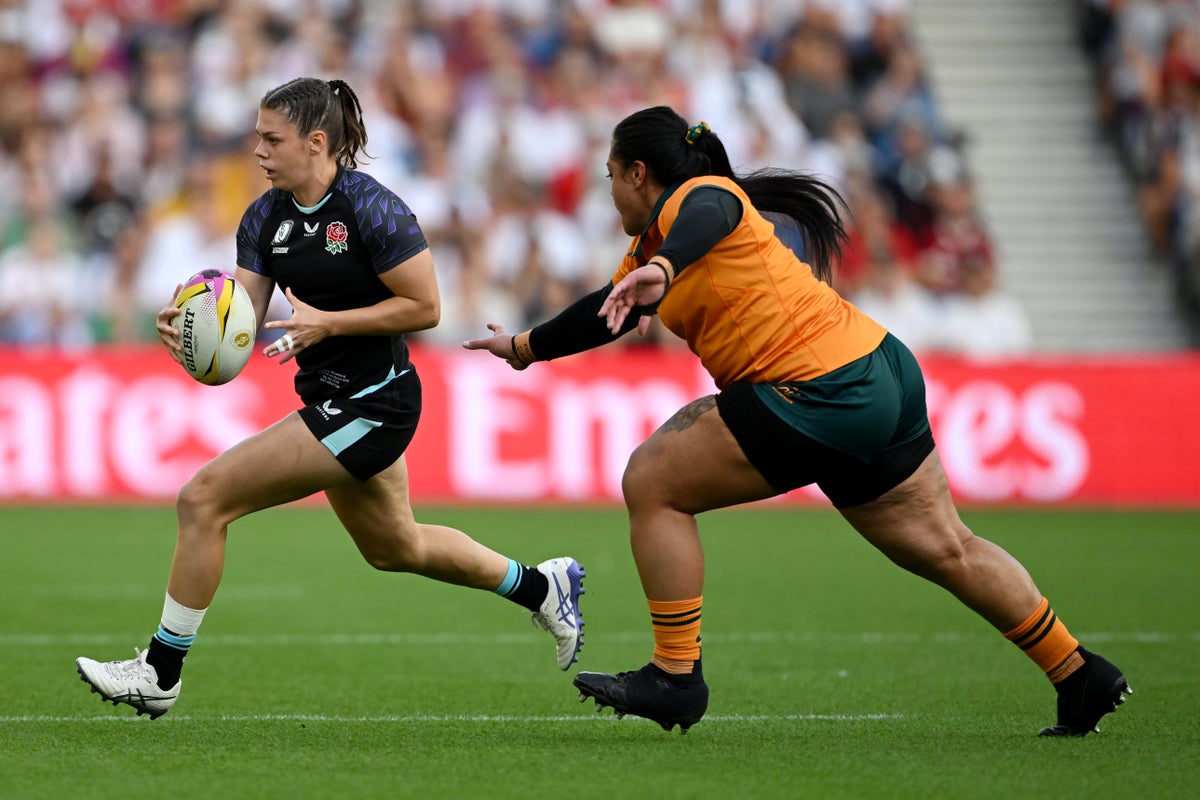The importance of Helena Rowland to the Red Roses squad at this Women’s Rugby World Cup was underlined emphatically by head coach John Mitchell before the warm-up win over Spain. That outing at Welford Road marked the 25-year-old 40th Test cap in her fifth different position, the right wing joining fly half, inside centre, outside centre and full-back as slots which the Loughborough Lightning Swiss Army Knife has capably filled. During this tournament, she’s even practiced her box kicking to provide emergency cover as a fourth scrum half should disaster strike.
“Helena is ‘Miss Versatility’ – full-back, wing, centre, 10 and probably fourth nine as well,” Mitchell explained. “She has that skillset to play that role.

“A 32-player squad has difficulty in its mix, so you have to be sure to have that versatility. We are lucky to have such versatility, some sides don’t have that. Helena is probably the most valuable person on the team. She’s an outstanding rugby player. I’m always thinking where I can fit her.”
There is generally more versatility in the women’s game than the men’s, even at the elite level. USA captain Kate Zackary has been used as a centre in Premiership Women’s Rugby (PWR) away from her usual back row home, while now out-of-favour England forward Poppy Cleall has featured in each of the three rows of the pack during her 65 caps to date. Yet Rowland’s capacity to cover just about every backline spot at a major tournament still stand out – and with Ellie Kildunne ruled out of the quarter-final against Scotland, Rowland has got the nod ahead of specialist Emma Sing to start at No 15 in Bristol.
“Obviously I would love to start every game, I think everyone in the squad would,” Rowland said this week. “That’s where the versatility becomes a blessing and a curse. Ultimately, most of the time it gets you in squads, which is where you want to be, you want to be in that 23 playing at the weekend.
“Would I like to start? Yes. But if that’s the role that I need to play in this World Cup, then that’s the role I’ll play. I’ll just try to do that to the best of my ability every opportunity I get; play as well as I can and see what happens from there.”
Before Kildunne truly flourished in England white, Rowland looked set to cement herself as England’s starting full-back during the last Rugby World Cup – before being dealt a cruel injury blow. Early in the second half of the semi-final against Canada, the playmaker suffered a serious ankle injury, ruling her out of the final. Her return came in the 2023 Six Nations, and missing the final means she maintains a record of being unbeaten in an England shirt – much like teammate Jess Breach and plenty of other more recent introductions to the squad.
Rowland’s installation at full-back may be temporary, with Kildunne all but certain to return next week provided she comes through concussion return-to-play protocols. Yet an assured performance off the bench against Australia steadied England’s backfield, with a searing cover tackle on Maya Stewart an eye-catching moment – and it is not impossible to consider that a standout showing in the quarter-finals could earn a starting shirt.

There has sometimes been a sense that England, and perhaps even Rowland herself, haven’t quite been sure how to get the best out of her, her versatility sometimes counting against her and preventing her seizing a starting shirt. There was a time where she looked set to rival Zoe Harrison for the leading fly half role; Rowland now appears third in that pecking order behind Holly Aitchison, who makes make her first start of the tournament on Saturday. Her outing against Samoa in Northampton was nonetheless highly assured.
As Mitchell’s warm words illustrate, her utility is a ultimately seen more as a blessing than curse by England. “Helena is pretty handy in the backfield,” the Red Roses head coach reiterated this week. “She’s got a huge work-rate and is very consistent. She’s super quick. She’s phenomenal and gives us so much versatility.”



-is-congratulated-by-her-supporters.jpeg?trim=0,0,0,0&width=1200&height=800&crop=1200:800)
